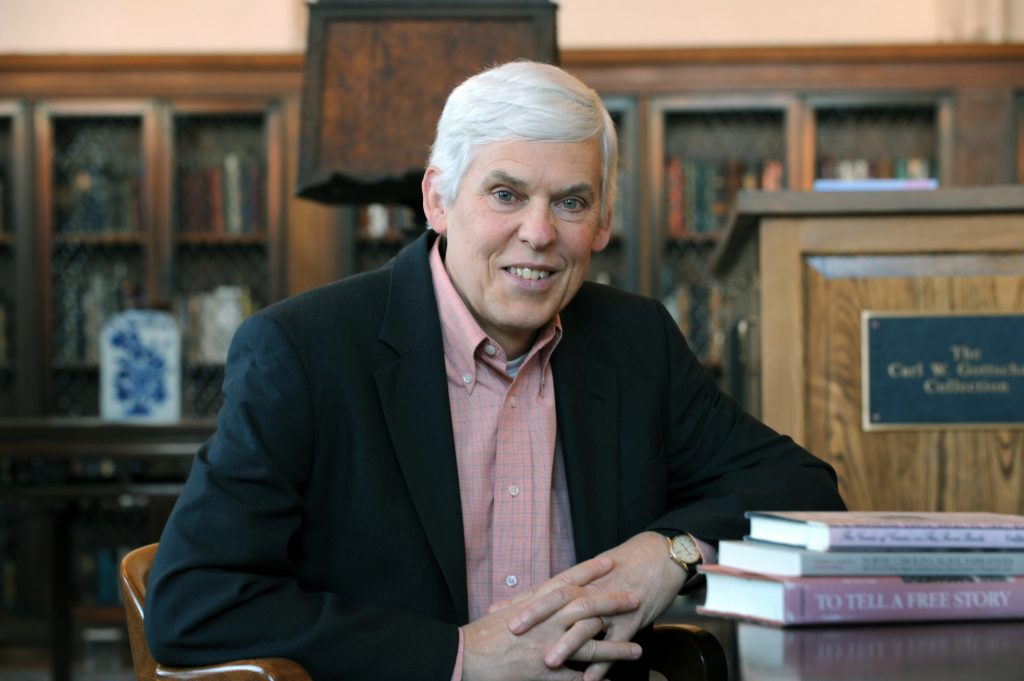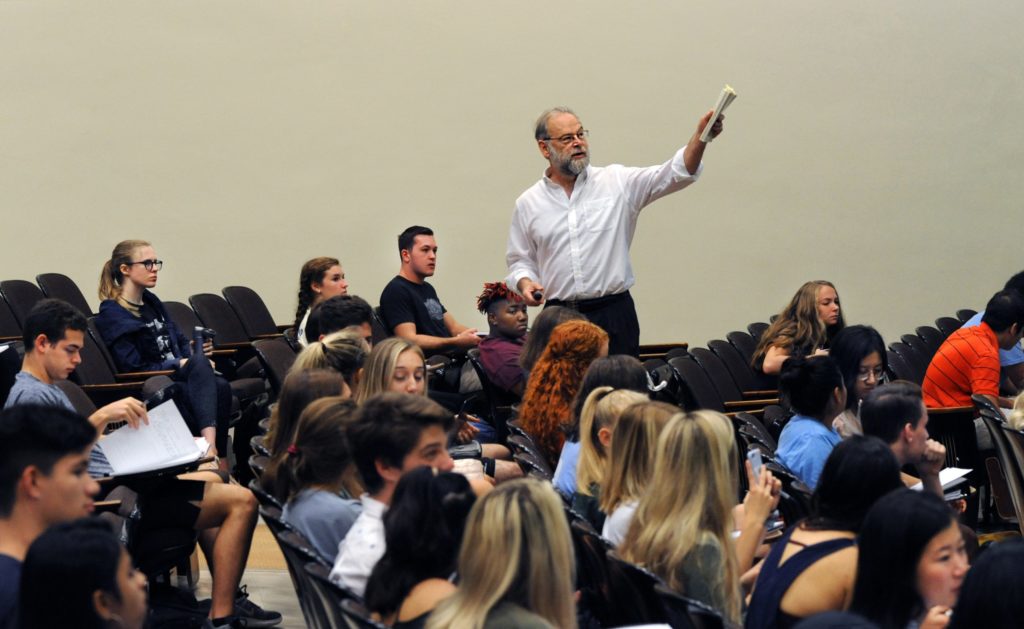Imagine taking a class on postwar Germany in German or a global business marketing class in Spanish. Students interested in advancing their language skills at Carolina are doing just that, thanks to the Languages Across the Curriculum (LAC) program in the College of Arts and Sciences.
Sophomore international studies major Ana Cabello-De La Garza is taking her second LAC course this spring, “Latin America Since Independence.” She previously participated in a French section for a global studies course. Her current class has a Spanish section led by Julian Diez Torres, a Ph.D. candidate in romance languages.
One benefit of the course, says Cabello-DeLa Garza is that it covers all areas. “You learn what was and currently is happening in Latin America, and it gives you the opportunity to express yourself in Spanish and [enhance] your speaking skills.”
The LAC program reaches beyond classes and across a variety of departments and disciplines across the University to bring the relevance of other languages and cultures closer to students and faculty.
“We’re trying to find a way of engaging students from different disciplines, but also taking interdisciplinary approaches to global topics,” said Tanya Kinsella, the undergraduate academic program coordinator in the Center for European Studies, who also oversees the LAC program. “It’s an additional commitment on behalf of the students, but they are usually really motivated and excited to use the language.”
Since it began in the spring of 1996, the LAC program has offered nine languages (Spanish, German, French, Arabic, Swahili, Dutch, Italian, Portuguese and Turkish) for more than 55 courses across 23 disciplines, and it is still growing.
The initiative is funded in part by U.S. Department of Education Title VI funds, which support programs and centers focusing on global area studies. Although UNC was not the first university to incorporate this type of intensive language instruction, it has one of the longest-lasting programs, according to Kinsella.
Students may enroll in a main lecture course, which may not always have a direct relation to the language in their LAC sections. Sometimes a faculty member is closely tied to the language and research, such as history professor John Chasteen’s Latin America course. He has researched many aspects of Latin American culture, including nationalism and national identity. For less commonly taught languages, like Swahili or Arabic, there are combined discussion sections.
Strong student demand led to the creation of a Spanish section for “Intro to Environment and Society” last fall, an attempt to attract students in the sciences. And approval for LAC research credit is in the works for students who are conducting research in a foreign language.
For example, students taking a course with Hannah Gill, assistant director for the Institute for the Study of the Americas, conducted ethnographic research in Mexico while incorporating information from the local Latino community.
Senior business major Caitlin Styres is enrolled in romance languages Ph.D. candidate Allison Bigelow’s “Global Marketing” Spanish section. Styres said learning business skills in another language is critical to success in today’s world.
“Cultural knowledge and awareness is just as important as knowing another language, something that Allison has been able to bring to the class through country-specific case studies,” Styres said.
Undergraduate students are not the only ones who benefit from LAC. The program relies on graduate teaching assistants who receive valuable hands-on teaching skills for the job market. With additional coursework, they may apply for a graduate certificate in languages-across-the-curriculum instruction.
The program shouldn’t deter students who are not yet fluent in another language, as an LAC class provides more opportunities to practice their skills with native speakers in the class, says Cabello-De La Garza.
“With the interaction and dynamics of the class, you experience new words and colloquialisms with native speakers, which also exposes you to new viewpoints by applying what you know,” she said.
Editor’s note: This story by Kristen Chavez ’13 is part of a package of stories on “Creative Collaborations” in the College of Arts and Sciences featured in the spring ’11 Carolina Arts and Sciences magazine.
Read more “Creative Collaborations” stories: Breathing Relief, Languages Across the Curriculum, Mentoring Chemistry, UNC-Duke N.C. Poverty Project, Globe-Trotting for Tardigrades, Real-Life Ethics, Electro-Acoustic Music, Tangled Up in Blues and Making Waves.




